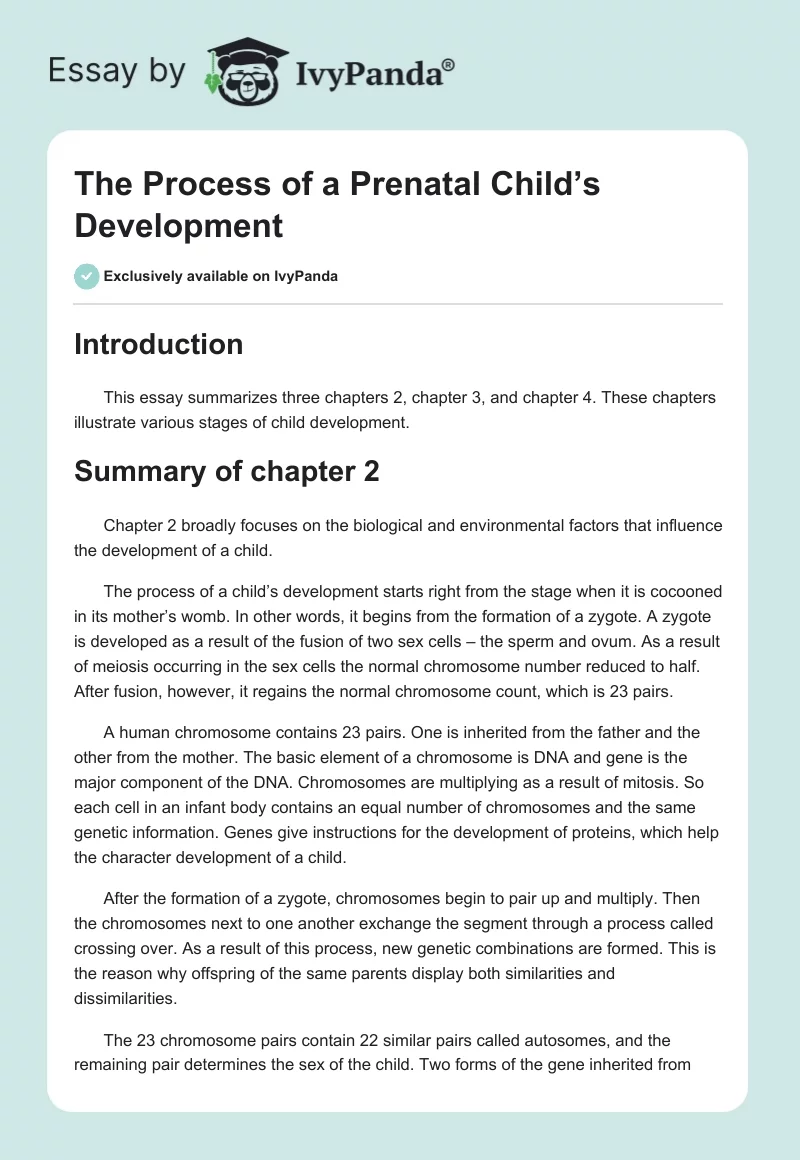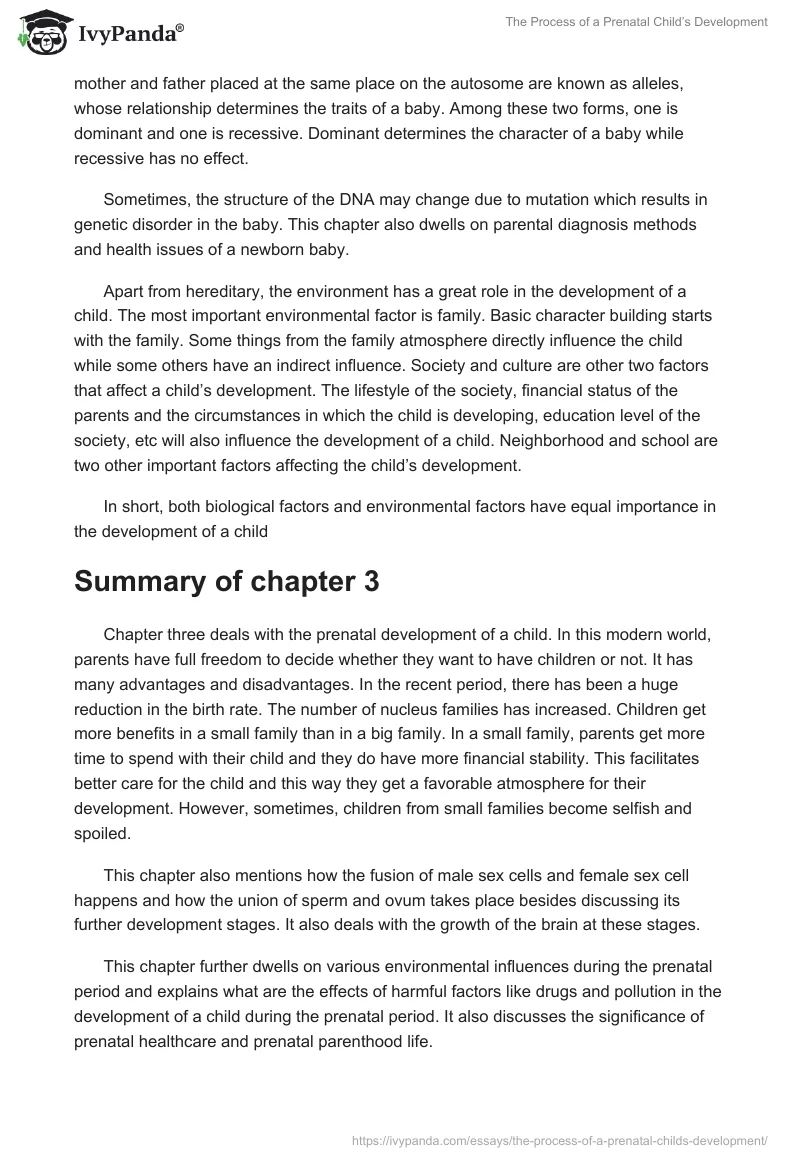Introduction
This essay summarizes three chapters 2, chapter 3, and chapter 4. These chapters illustrate various stages of child development.
Summary of chapter 2
Chapter 2 broadly focuses on the biological and environmental factors that influence the development of a child.
The process of a child’s development starts right from the stage when it is cocooned in its mother’s womb. In other words, it begins from the formation of a zygote. A zygote is developed as a result of the fusion of two sex cells – the sperm and ovum. As a result of meiosis occurring in the sex cells the normal chromosome number reduced to half. After fusion, however, it regains the normal chromosome count, which is 23 pairs.
A human chromosome contains 23 pairs. One is inherited from the father and the other from the mother. The basic element of a chromosome is DNA and gene is the major component of the DNA. Chromosomes are multiplying as a result of mitosis. So each cell in an infant body contains an equal number of chromosomes and the same genetic information. Genes give instructions for the development of proteins, which help the character development of a child.
After the formation of a zygote, chromosomes begin to pair up and multiply. Then the chromosomes next to one another exchange the segment through a process called crossing over. As a result of this process, new genetic combinations are formed. This is the reason why offspring of the same parents display both similarities and dissimilarities.
The 23 chromosome pairs contain 22 similar pairs called autosomes, and the remaining pair determines the sex of the child. Two forms of the gene inherited from mother and father placed at the same place on the autosome are known as alleles, whose relationship determines the traits of a baby. Among these two forms, one is dominant and one is recessive. Dominant determines the character of a baby while recessive has no effect.
Sometimes, the structure of the DNA may change due to mutation which results in genetic disorder in the baby. This chapter also dwells on parental diagnosis methods and health issues of a newborn baby.
Apart from hereditary, the environment has a great role in the development of a child. The most important environmental factor is family. Basic character building starts with the family. Some things from the family atmosphere directly influence the child while some others have an indirect influence. Society and culture are other two factors that affect a child’s development. The lifestyle of the society, financial status of the parents and the circumstances in which the child is developing, education level of the society, etc will also influence the development of a child. Neighborhood and school are two other important factors affecting the child’s development.
In short, both biological factors and environmental factors have equal importance in the development of a child
Summary of chapter 3
Chapter three deals with the prenatal development of a child. In this modern world, parents have full freedom to decide whether they want to have children or not. It has many advantages and disadvantages. In the recent period, there has been a huge reduction in the birth rate. The number of nucleus families has increased. Children get more benefits in a small family than in a big family. In a small family, parents get more time to spend with their child and they do have more financial stability. This facilitates better care for the child and this way they get a favorable atmosphere for their development. However, sometimes, children from small families become selfish and spoiled.
This chapter also mentions how the fusion of male sex cells and female sex cell happens and how the union of sperm and ovum takes place besides discussing its further development stages. It also deals with the growth of the brain at these stages.
This chapter further dwells on various environmental influences during the prenatal period and explains what are the effects of harmful factors like drugs and pollution in the development of a child during the prenatal period. It also discusses the significance of prenatal healthcare and prenatal parenthood life.
Summary of chapter 4
Chapter 3 mentioned the birth and the infant. A child’s birth has three stages. The first and second stage has two parts. In the first stage dilation and enhancement of the cervix occurs and in the second part comes the transition. In the second stage, pushing is the first part and the birth of the baby is the second part. The third stage is the delivery of the placenta.
This chapter also mentions the appearance of an infant and different types of approaches to childbirth. Different kinds of medical intervention for different purposes like fetal monitoring, for delivery medication, and different techniques used for delivery like instrument delivery, induced labor method, and cesarean methods are discussed here. Various types of birth complications like oxygen deprivation and low birth weight are also dealt with in this chapter. It also focuses on the various biological process taking place in an infant’s life.
Conclusion
From these three chapters, it is clear that a child’s development starts from its mother’s womb. Child’s physical and mental characteristic depends on both the hereditary and environmental factors.


